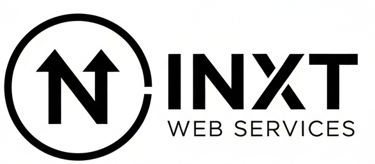Why Research & Development is Your Company's Secret Weapon
Ever wonder how your smartphone gets smarter every year? Or how life-saving medicines go from a lab experiment to your local pharmacy? The answer is a powerful, two-part engine of progress: Research and Development (R&D). It's not just for scientists in white coats; it's the lifeblood of innovation in every industry.
Let's dive into what R&D is and why it's the ultimate key to unlocking a better future. 🚀
What Exactly is Research & Development?
At its core, Research and Development (R&D) is a systematic process that companies and organizations use to gain new knowledge and create new products, services, or processes. It's about looking ahead, asking "what if?", and then building the answer.
Research (The 'R'): This is the discovery phase. It's about exploring the unknown, gathering information, and formulating new ideas or theories. It’s the "blue-sky thinking" and foundational work.
Development (The 'D'): This is the application phase. It involves taking the knowledge gained from research and using it to design, build, and test new products or improve existing ones. It's where ideas become tangible.
Why R&D is the Engine of Growth
Investing in R&D isn't just a cost; it's one of the most critical investments a business can make. It's the difference between leading the pack and falling behind.
Drives Innovation: R&D is the birthplace of new ideas. It allows companies to create groundbreaking products that can define a market, like the first iPhone or the development of mRNA vaccines.
Creates a Competitive Edge: A strong R&D pipeline ensures a company isn't just competing on price but on unique features, superior quality, and innovative solutions. This creates a powerful and sustainable advantage over rivals.
Boosts Efficiency and Reduces Costs: R&D isn't only about creating new things. It’s also about finding better, faster, and cheaper ways to do existing things. This can lead to streamlined manufacturing processes and significant long-term savings.
Future-Proofs Your Business: The world changes fast. R&D helps companies anticipate future trends, adapt to new technologies, and meet the evolving needs of their customers, ensuring long-term relevance and survival.
The Three Flavors of R&D
R&D isn't a one-size-fits-all process. It generally falls into three main categories, often flowing from one to the next.
Basic Research: This is pure, curiosity-driven investigation aimed at understanding fundamental principles without a specific commercial application in mind. Think of scientists studying the properties of a new material or exploring the mysteries of quantum physics. This is high-risk but can lead to the biggest breakthroughs.
Applied Research: This stage takes the knowledge gained from basic research and aims to solve a specific, practical problem. For example, after discovering a new material (basic research), applied research would investigate how to use that material to build a stronger, lighter battery.
Experimental Development: This is the final step where theory meets reality. It involves using existing knowledge to produce new products, processes, or services. This includes everything from designing prototypes and running pilot projects to testing and refining the final product before it goes to market.
The Future is Built on R&D
From sustainable energy solutions to artificial intelligence and personalized medicine, the biggest challenges and opportunities of our time will be met through R&D. Companies that embrace a culture of curiosity, experimentation, and continuous improvement are the ones that will not only succeed but also shape the world of tomorrow. So, the next time you use a product that feels like magic, remember the years of research and development that made it possible. ✨
